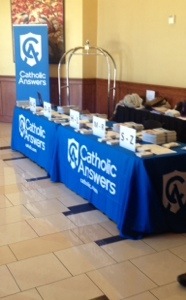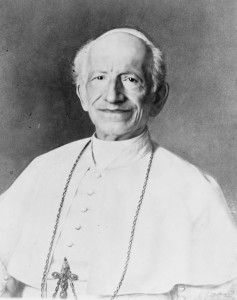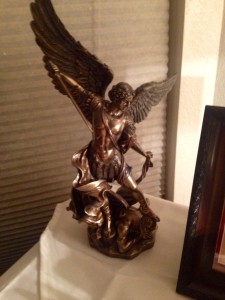2014 Catholic Answers National Conference – Day 3
Today was very much a history-focused day. It started off bright and early with a dynamic talk from Christopher Check entitled “Modern Martyrdom: Can It Happen Here?” which recounted the story of the Cristeros in great detail. Normally history tales don’t engage me that much, however Mr. Check’s telling of the plight of the Catholic resistance to the socialist government was very interesting, and I was unaware of how the persecution continued much further into the last century than I had known before. The most engaging part of the speech came in the retelling of the story of Blessed José Sánchez del Río, a young boy who begged to join the Cristeros and ended up paying the ultimate price for his unwavering faith. This earned José the nickname of “Mexico’s Tarcisius”… the retelling of this story compelled people in the audience to yell out “Viva Cristo Rey!” – the battle cry of the Cristeros.
After a short break, it was time for Catholic Answers‘ president, Karl Keating, to take the stage. Karl’s presentation was entitled “Fidelity Under Fire”, where he recounted an interesting story that I had never heard before… the plight of the Catholic faithful in Japan. Mr. Keating’s speaking style is very ambient… carefully weaving a dramatic narrative that painted a very clear picture of the terrors that certain priests and clergymen were subjected to in “the pit”… they were bound with rags and lowered headfirst into a hole filled with sewage. Some apostatized in hours, some weeks, and many died. The story continued that after near total eradication of the Japanese Catholic culture, the Western Catholic clergy that arrived hundreds of years later found that some faithful remained entirely in secret and practiced without any clergy present waiting for someone to come that was safe to trust in.
For lunch, I had my first ever In-N-Out Burger while I got to know Trent Horn, his lovely wife Laura, her family and a few other new friends. For more information about Trent’s talk, check out my coverage from yesterday and his new book, Persuasive Pro Life. I plan on reviewing Persuasive Pro Life as soon as I can get through it, so stay tuned for that.
After lunch, the panel of apologists took the stage for a Q&A Panel. The questions were too numerous to recount here, but they covered a great deal of apologetics topics, material, citations, and jokes in the 75 minute panel. They took a round-robin approach where the question was assigned to an apologist and after they had completed their short and concise answer, the others could add to the answer to round it out a bit more. This allowed each question to get a buffet-style response… you see a bit of this on the Catholic Answers Live radio program, but it was multiplied by several times with a stage full of apologists. Like last year, this was a high point in the day and showed the great rapport that the staff apologists have with one another.
There was a short break before Holy Mass with Archbishop Alexander Sample presiding and Father Vincent Serpa providing the homily. Mass feels different when you are in the midst of several hundred devout, on-fire Catholics. Hymns were booming. Loud prayers rang out to the ceiling of the ballroom. Archbishop Sample celebrates the Holy Sacrifice in such a beautiful way, using the traditional Latin prayers and responses and taking special care to display the utmost reverence in his actions and body postures. Father Serpa’s homily was very moving… he recounted the reasons for our faith and how we must sometimes carry the cross, even when the burdens don’t make sense to us. He recounted the story of a teenager that wrote him with same-sex attraction and how they were struggling to make sense of why God would create them with such an inclination. His response showed how suffering can be an act of love, and how we can reciprocate his suffering love for us and how carrying such a cross can be a beautiful thing. I located the question and answer, so you can read it for yourself.
The banquet dinner was held on the marina-facing lawn, and after the food had arrived it was time for our keynote address from Archbishop Sample. The archbishop spoke about how we must banish a lukewarm attitude and become on-fire in the faith, and how we must grow to know the faith, speak the faith, and live the faith. He recounted his experiences in reading Francis Caravajal’s book “Lukewarmness: The Devil in Disguise” wherein he learns (and re-learns) to force the temptation to tepidity out of his life. In the practice of the faith, he called on us to ask ourselves “where is the love, the joy, the devotion?” and challenged us to contemplate the face of Christ, learn to love him, and then do naturally what you do when you love someone – learn everything you can about him, give him 100% of yourself, and become on fire disciples. We were outside, just off of a somewhat busy road and I often heard cars passing by, and the archbishop’s commanding voice reverberating over the marina. I was reminded at once of two things: the commanding presence of Archbishop Fulton J. Sheen and the verse from Scripture, Isaiah 55:12:
You will go out in joy and be led forth in peace; the mountains and hills will burst into song before you, and all the trees of the field will clap their hands.
I challenge any Catholic to come to this conference, hear these presentations, answers, and words from the bishop and not be set on fire. Archbishop Sample mused in his speech about how the Church’s work tends to be done by around 7% of the population… imagine what it would be like if we doubled that to 14%? If we could all learn to transmit our faith as effectively as these men did this weekend, I suspect we would be headed for a change the likes of which the world has not seen for hundreds of years.
This conference was a tremendous experience. The quality of apologetics is some of the best in the world, and the sense of community was palpable… people were excited to get the opportunity to get to know one another, to share and hear about each other’s struggles, and to learn to transmit the faith more effectively. The biggest thing that I can take away from the conference is this: I don’t feel alone when it’s over. This was as much of a retreat as it was a conference, and I feel rejuvenated now that it is through. I have made many friends this weekend and with luck we can continue to work together to be the leaven for this world.
You can find the rest of my coverage of this year’s conference here.

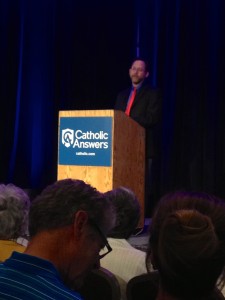
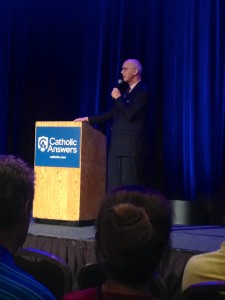
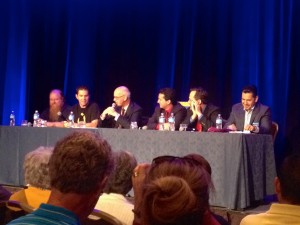
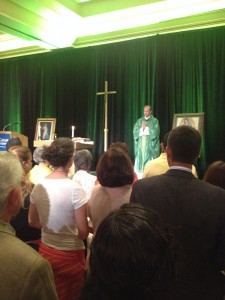
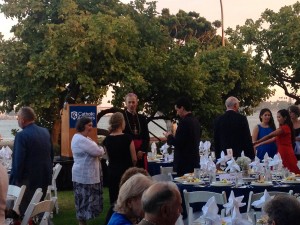
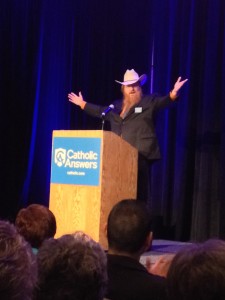
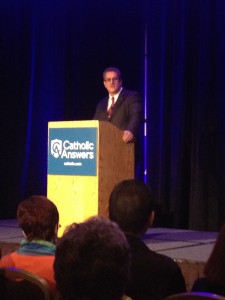
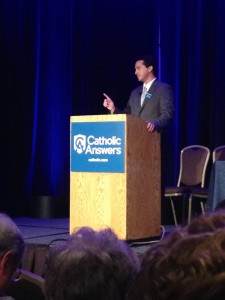
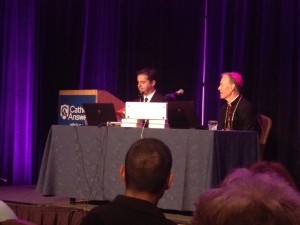

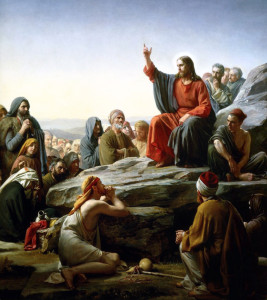 This is part of a continuing series where I investigate the claims made by a pamphlet that was left for me asserting that Catholicism is not Christian. You can read the pamphlet in it’s entirety here: (
This is part of a continuing series where I investigate the claims made by a pamphlet that was left for me asserting that Catholicism is not Christian. You can read the pamphlet in it’s entirety here: (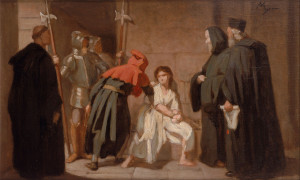 This is part of a continuing series where I investigate the claims made by a pamphlet that was left for me asserting that Catholicism is not Christian. You can read the pamphlet in it’s entirety here: (
This is part of a continuing series where I investigate the claims made by a pamphlet that was left for me asserting that Catholicism is not Christian. You can read the pamphlet in it’s entirety here: ( I went to lunch with some coworkers today. We went to an establishment that served alcohol, and we got into a discussion about the frozen margarita machines and the Jagermeister chiller that they had behind the bar. The conversation lingered on that liquor, and I got to throw out one of my favorite little trivia facts:
I went to lunch with some coworkers today. We went to an establishment that served alcohol, and we got into a discussion about the frozen margarita machines and the Jagermeister chiller that they had behind the bar. The conversation lingered on that liquor, and I got to throw out one of my favorite little trivia facts:
